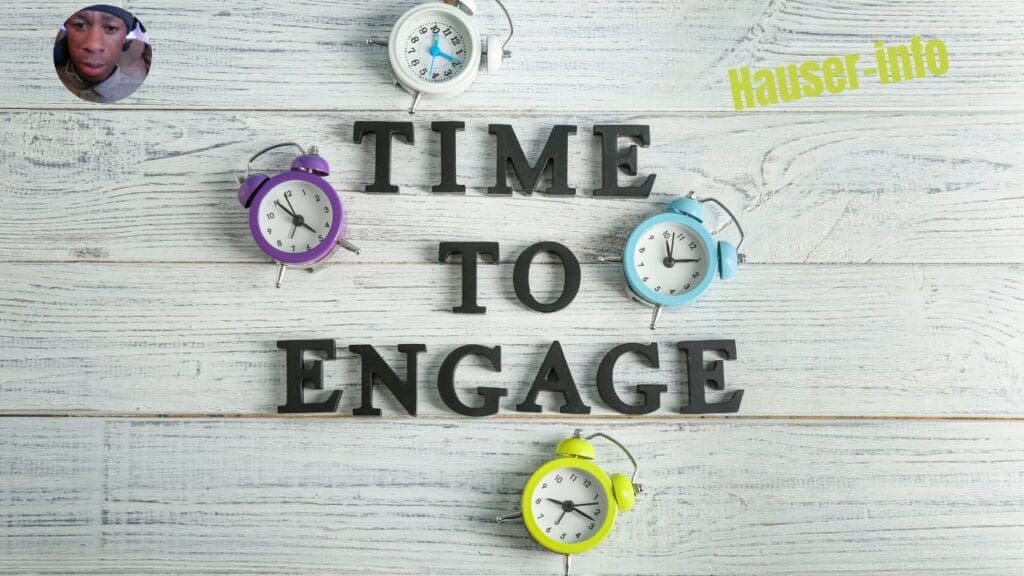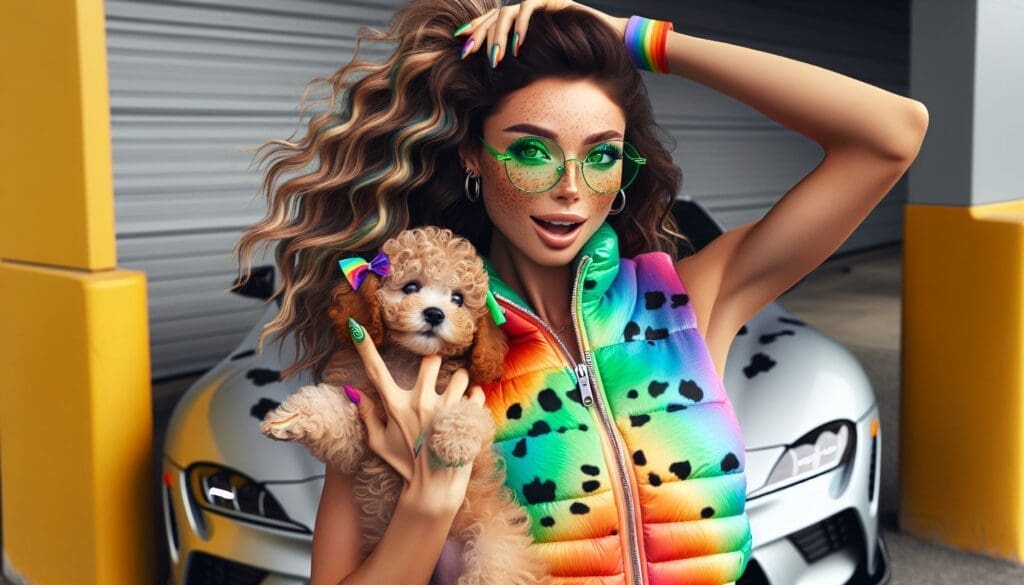Author Bio:

David A. Hauser is the founder and CEO of Hauser Info, a company that provides information and resources for online entrepreneurs. He is also an affiliate for Namecheap, a leading provider of web hosting and domain registration services.

- How to Choose Images That Will Make Your Blog Post Pop
- How to Resize and Compress Images without Sacrificing Quality:
- How to add alt text to your images so that people who are visually impaired can understand your content?
- How to Use Images to Improve Your Blog's SEO and Get More Traffic
- Common Mistakes People Make When Adding Images to Their Blog Posts
- Tips for Adding Images to Your Blog Posts that Will Keep Your Readers Engaged
- Conclusion
How to Choose Images That Will Make Your Blog Post Pop

how to add images to a blog post
How to add images to a blog post: Images are a powerful way to add visual interest and engagement to your blog posts. They can help you break up text, illustrate your points, and capture attention. But not all images are created equal. If you want your images to make your blog posts pop, you need to choose them carefully.
Here are a few tips for choosing images that will make your blog post pop:
- Choose high-quality images. The quality of your images is important. Low-quality images will look blurry and unprofessional. Make sure your images are sharp and clear. [how to add images to a blog post]
- Choose images that are relevant to your topic. Your images should be relevant to the topic of your blog post. This will help them make sense to your readers and keep them engaged. [how to add images to a blog post]
- Choose images that are visually appealing. Your images should be visually appealing. This means they should be well-composed and interesting to look at. [how to add images to a blog post]
- Choose images that are copyright-free. You don’t want to get in trouble for using copyrighted images. Make sure you have permission to use any images you include in your blog posts. [how to add images to a blog post]
Once you’ve chosen your images, you need to optimize them for your blog post. This means making sure they are the right size and format for your blog. You also need to add captions and alt text to your images. This will help search engines index your images and make them more accessible to people who are visually impaired.
Here are some additional tips for optimizing your images for your blog post:
- Resize your images to the correct size. The size of your images should be appropriate for the width and height of your blog post. You can use a free online tool like TinyPNG: https://tinypng.com/ to resize your images without losing quality. [how to add images to a blog post]
- Format your images correctly. The format of your images should be compatible with your blog platform. Most blog platforms support JPEG, PNG, and GIF images. [how to add images to a blog post]
- Add captions and alt text to your images. Captions and alt text will help people understand your images and make them more accessible to people who are visually impaired. [how to add images to a blog post]
By following these tips, you can choose images that will make your blog post pop. Images can help you improve your blog’s SEO, increase engagement, and build your brand. So don’t forget to include images in your blog posts!
Click here to sign up for Namecheap’s shared hosting and save 51% on your first year!
Disclaimer:
I am an affiliate of Namecheap, and I encourage you to sign up for their affiliate program. I will earn a commission on every sale that I refer to them.
I hope this blog post was helpful. Please let me know if you have any other questions.
How to Resize and Compress Images without Sacrificing Quality:

Adding images to your blog posts is a great way to break up the text and make your content more visually appealing. However, if you’re not careful, your images can take up a lot of space and slow down your website. [how to add images to a blog post]
That’s where resizing and compressing images comes in. By resizing your images to the correct size for your blog post, and compressing them without sacrificing quality, you can ensure that your images look great without slowing down your website. [how to add images to a blog post]

How to Resize Images
There are a number of ways to resize images. You can use a photo editing software like Photoshop or GIMP, or you can use a free online resizing tool like TinyPNG or Optimizilla. [how to add images to a blog post]
To resize an image in Photoshop, open the image in the software and go to the Image > Image Size menu. In the Image Size dialog box, you can enter the desired width and height of your image. You can also choose to resize the image proportionally or by entering absolute values for the width and height. [how to add images to a blog post]
Once you’ve entered the desired dimensions, click the OK button to resize the image.
To resize an image using a free online resizing tool, simply upload the image to the tool and select the desired dimensions. The tool will then resize the image and automatically save it. [how to add images to a blog post]

How to Compress Images
Once you’ve resized your images, you can compress them to reduce their file size. This will help to improve the performance of your website and make your images load faster. [how to add images to a blog post]
There are a number of ways to compress images. You can use a photo editing software like Photoshop or GIMP, or you can use a free online compression tool like TinyPNG or Optimizilla.
To compress an image in Photoshop, open the image in the software and go to the File > Save for Web (Legacy) menu. In the Save for Web dialog box, select the JPEG format and enter the desired quality setting. The higher the quality setting, the larger the file size will be.
Once you’ve entered the desired quality setting, click the Save button to compress the image.
To compress an image using a free online compression tool, simply upload the image to the tool and select the desired quality setting. The tool will then compress the image and automatically save it.

How to Add Images to a Blog Post
Once you’ve resized and compressed your images, you can add them to your blog post. Most blogging platforms have a built-in image uploader that you can use to add images to your posts.
To add an image to your blog post, simply click on the “Add Media” button and select the image that you want to upload. Once the image has been uploaded, you can insert it into your post by clicking on the “Insert into Post” button.
You can also add images to your blog post by pasting the image URL into the post editor.
By resizing and compressing your images, you can ensure that your images look great without slowing down your website. By following the steps outlined in this article, you can easily resize and compress your images and add them to your blog posts. [how to add images to a blog post]
How to add alt text to your images so that people who are visually impaired can understand your content?

Images are a great way to add visual interest and information to your blog posts. However, for people who are visually impaired, images can be inaccessible. This is because screen readers cannot read the text that is embedded in images.

What is alt text?
Alt text is a short description of an image that is used by screen readers to describe the image to visually impaired users. Alt text should be descriptive enough so that users can understand the content of the image, even if they cannot see it.

How to add alt text to your images
There are two ways to add alt text to your images:
- When you upload an image to your blog post, you will be prompted to add alt text.
- If you have already uploaded an image to your blog post, you can edit the image and add alt text.

The best practices for writing alt text
- The alt text should be descriptive enough so that users can understand the content of the image, even if they cannot see it. [how to add images to a blog post]
- The alt text should be short and concise. [how to add images to a blog post]
- The alt text should be accurate and not misleading. [how to add images to a blog post]
- The alt text should be relevant to the content of the blog post. [how to add images to a blog post]

Examples of good alt text
- A picture of a dog: “A brown dog with a white spot on its chest.”
- A picture of a graph: “A graph showing the growth of the company’s sales over the past year.”
- A picture of a map: “A map of the city of London.”

Examples of bad alt text
- “Image of a dog.”
- “Graph.”
- “Map.”
By adding alt text to your images, you can make your blog posts more accessible to people who are visually impaired. This is a simple way to make your content more inclusive and welcoming to everyone.
Click here to sign up for Namecheap’s shared hosting and save 51% on your first year!
Disclaimer
I am an affiliate of Namecheap, and I encourage you to sign up for their affiliate program. I will earn a commission on every sale that I refer to them.
How to Use Images to Improve Your Blog’s SEO and Get More Traffic

How to add images to a blog post: Images are a great way to break up the text in your blog posts and make them more visually appealing. They can also help to improve your blog’s SEO and get more traffic.
When used correctly, images can:
- Increase the click-through rate (CTR) of your blog posts. [how to add images to a blog post]
- Improve the overall ranking of your blog posts in search engines. [how to add images to a blog post]
- Make your blog posts more engaging and visually appealing. [how to add images to a blog post]
Here are some tips on how to use images to improve your blog’s SEO and get more traffic:
- Optimize your images for SEO. When you upload images to your blog, be sure to include relevant keywords in the file name and alt text. This will help search engines to index your images and make them more likely to appear in search results. [how to add images to a blog post]
- Use high-quality images. Images that are blurry or pixelated will not do your blog any favors. Use high-quality images that are relevant to your content. [how to add images to a blog post]
- Resize your images. Large images can slow down your website, which can hurt your SEO. Be sure to resize your images to a reasonable size before uploading them to your blog. [how to add images to a blog post]
- Add captions to your images. Captions can help to explain the images in your blog posts and make them more engaging. [how to add images to a blog post]
- Use social media sharing buttons. When you add social media sharing buttons to your blog posts, you make it easy for people to share your content on social media. This can help to increase the visibility of your blog posts and drive more traffic to your site. [how to add images to a blog post]
Here are some additional tips that you can follow to use images to improve your blog’s SEO and get more traffic:
- Use images that are relevant to your content. This will help search engines to understand what your images are about and index them accordingly. [how to add images to a blog post]
- Use images that are high-quality and visually appealing. This will make your blog posts more engaging and attractive to visitors. [how to add images to a blog post]
- Use images that are properly optimized for SEO. This includes using relevant keywords in the file name and alt text. [how to add images to a blog post]
- Use images that are resized to a reasonable size. This will help to improve the loading speed of your blog posts. [how to add images to a blog post]
- Use captions to explain your images. This will help visitors to understand what your images are about.
- Use social media sharing buttons. This will make it easy for visitors to share your content on social media. [how to add images to a blog post]
By following these tips, you can use images to improve your blog’s SEO and get more traffic.
- Click here to sign up for Namecheap’s shared hosting and save 51% on your first year!
- “I am an affiliate of Namecheap, and I encourage you to sign up for their affiliate program. I will earn a commission on every sale that I refer to them.”
Common Mistakes People Make When Adding Images to Their Blog Posts

Images are a great way to add visual interest and information to your blog posts. However, there are a few common mistakes that people make when adding images to their blog posts. These mistakes can make your blog posts less accessible, less engaging, and less SEO-friendly.
In this article, we will discuss some of the most common mistakes people make when adding images to their blog posts. We will also provide tips on how to avoid these mistakes and add images to your blog posts in a way that is both effective and safe.
What are the most common mistakes people make when adding images to their blog posts?
- Not using alt text: Alt text is a short description of an image that is used by screen readers to describe the image to visually impaired users. Not using alt text can make your blog posts inaccessible to visually impaired users. [how to add images to a blog post]
- Using images that are too large: Large images can slow down the loading time of your blog posts. This can make your blog posts less user-friendly and can also impact your SEO rankings. [how to add images to a blog post]
- Not optimizing images for SEO: There are a few things you can do to optimize images for SEO, such as using descriptive file names and adding alt text. Optimizing images for SEO can help your blog posts rank higher in search engine results pages (SERPs). [how to add images to a blog post]
- Not using images in a way that is relevant to the content: Images should be used to complement the content of your blog posts. Using images that are not relevant to the content can make your blog posts less engaging and less informative. [how to add images to a blog post]
How to avoid these mistakes and add images to your blog posts in a way that is both effective and safe?
- Always use alt text: Alt text is essential for making your blog posts accessible to visually impaired users. When writing alt text, be sure to describe the image in detail. [how to add images to a blog post]
- Use images that are the right size: Large images can slow down the loading time of your blog posts. When choosing images, be sure to select images that are the right size for your blog posts. [how to add images to a blog post]
- Optimize images for SEO: There are a few things you can do to optimize images for SEO, such as using descriptive file names and adding alt text. Optimizing images for SEO can help your blog posts rank higher in SERPs. [how to add images to a blog post]
- Use images in a way that is relevant to the content: Images should be used to complement the content of your blog posts. Using images that are not relevant to the content can make your blog posts less engaging and less informative. [how to add images to a blog post]
By following these tips, you can avoid the most common mistakes people make when adding images to their blog posts. This will help you create blog posts that are both effective and safe.
Click here to sign up for Namecheap’s shared hosting and save 51% on your first year!
Disclaimer
I am an affiliate of Namecheap, and I encourage you to sign up for their affiliate program. I will earn a commission on every sale that I refer to them.
Tips for Adding Images to Your Blog Posts that Will Keep Your Readers Engaged

Images are a great way to break up text and make your blog posts more visually appealing. They can also help to keep your readers engaged by providing them with a visual reference to your points. In this article, I will discuss some tips for adding images to your blog posts that will keep your readers engaged.

Why Use Images in Your Blog Posts?
There are many reasons why you should use images in your blog posts.
Here are a few of the most important reasons:
- Images can break up text and make your blog posts more visually appealing. This can help to keep your readers engaged and make your posts more enjoyable to read.
- Images can help to illustrate your points. This can make your posts easier to understand and more memorable for your readers.
- Images can help to add personality to your blog posts. This can make your posts more engaging and help to build a connection with your readers.
How to Add Images to Your Blog Posts

There are a few different ways to add images to your blog posts.
Here are a few of the most common methods:
- Upload your own images. If you have your own images, you can upload them to your blog post. This is a great way to add personal touches to your posts.
- Use stock images. There are many websites that offer free or paid stock images. This is a great way to find high-quality images that are relevant to your blog posts.
- Use social media images. If you have shared images on social media, you can embed them in your blog posts. This is a great way to share your social media content with your blog readers.

Tips for Choosing Images
When choosing images for your blog posts, there are a few things you should keep in mind:
- Choose images that are relevant to the topic of your blog post. This will help to keep your readers engaged and make your posts more informative.
- Choose images that are high-quality. This will help your posts look more professional and polished.
- Choose images that are the right size. Make sure your images are not too large or too small.
- Choose images that are copyright-free. You don’t want to get sued for copyright infringement.
Tips for Using Images in Your Blog Posts
Once you’ve chosen your images, there are a few things you can do to use them effectively in your blog posts:
- Place images strategically. Don’t just add images anywhere in your posts. Place them strategically to break up text and make your posts more visually appealing.
- Caption your images. Captions can help to explain your images and make them more accessible to people with disabilities.
- Use alt text. Alt text is text that is displayed when an image cannot be displayed. This is important for people who use screen readers.

Conclusion
By following these tips, you can add images to your blog posts that will keep your readers engaged. By using relevant, high-quality images that are the right size and have captions, you can make your blog posts more visually appealing and informative.
Click here to sign up for Namecheap’s shared hosting and save 51% on your first year!
Disclaimer
I am an affiliate of Namecheap, and I encourage you to sign up for their affiliate program. I will earn a commission on every sale that I refer to them.

7 thoughts on “7 top new how to add images to a blog post”